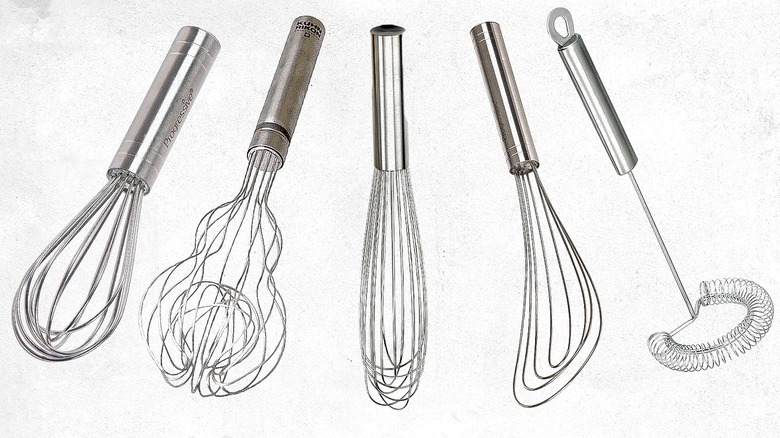Powerful kitchen appliances like stand mixers, blenders, and food processors have made it easier than ever for home cooks, but there’s still a place for the versatile hand tools that preceded them. In most kitchens, you’ll see both, just as in a construction site, you’ll typically find the classic hammers and wheelbarrows among the fancy nail guns and excavators. On top of that, there is usually more than one type of hammer at hand because they have different uses.
The same logic applies to even commonplace kitchen tools, like whisks. You probably have several of these in your home already, but do you know their proper names, uses, and what sets them apart?
Just like how construction tradespeople know the difference between each hammer, understanding how whisks differ is equally important for anyone using the instrument. Here’s a list of 14 different kinds of whisks with a quick rundown on the distinguishing aspects of each one and guidance on when and how they’re used.
1. Balloon whisk
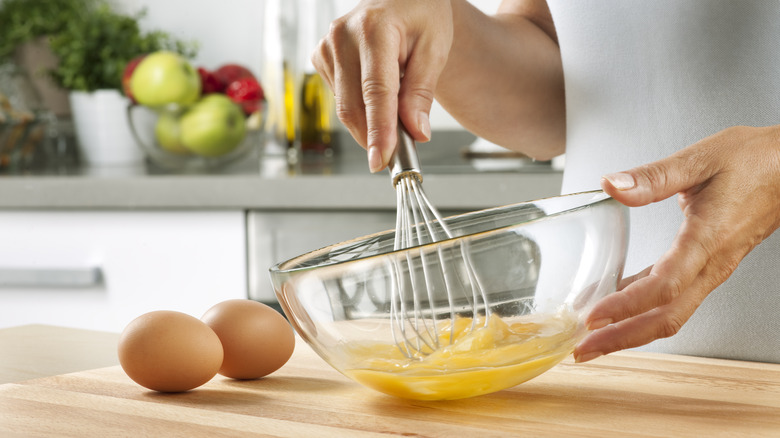
If you close your eyes and visualize a whisk, the balloon variety is probably what you envision. It’s the most common kitchen whisk, the one that likely stands in a canister near your stove or sits in a drawer under your counter entangled with your potato masher.
Balloon whisks are constructed of thin wire loops of slightly different lengths, set into a sturdy handle in a circular pattern. The wires form a sort of basket at the end, swelling to a bulbous shape reminiscent of an elongated light bulb. Some have more wires and some have fewer, some are sturdier and some are thinner, but they all follow this basic pattern.
Balloon whisks are for whipping, frothing, and aerating. Reach for one when you want to beat eggs, whip cream, or beat egg whites into the perfect egg foam. It’s also the ideal tool for preparing a chiffon cake or angel food cake by hand.
2. Double balloon whisk
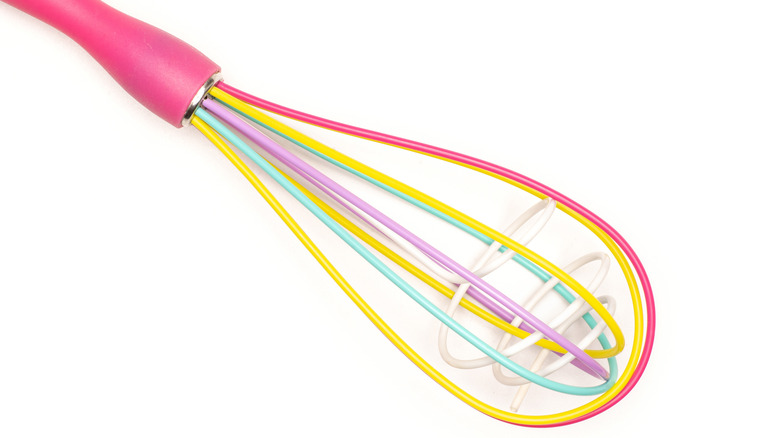
Since balloon whisks are so common, manufacturers offer a lot of different variations. For example, some have silicone-coated or nylon wires, so they’re safe to use with nonstick cookware. Others contour or coat the whisks’ handles for better grip with wet hands.
The so-called “double” balloon whisk aims to make the basic whisk more efficient. Inside the protruding end of the whisk, there is a small ball of spirals made with the same material as the other wires. Those extra wires, the reasoning goes, provide additional aeration to help you whip your eggs or cream more effectively.
Whether or not this type of whisk actually offers a functional improvement over standard balloon whisks is up for debate. However, more wires equals more to clean, and the ball shape also makes it harder to get to. That being said, TV chef and cookbook author Nigella Lawson has used this type of whisk on her shows.
3. French whisk

Fg Trade/Getty Images
The French whisk resembles a regular balloon whisk, so you may already have one or two on hand without ever realizing that they are not the same. Though it’s similar to a balloon whisk at first glance, there are some important differences.
The first is that the French whisk is narrower and more tapered than a balloon whisk, giving it a slender profile. This helps it get into the corners where the side of your pot or pan meets the bottom, so your foods don’t get stuck there and scorch or fail to mix properly.
A second difference is that French whisks are often made with heavier gauge wire than conventional balloon whisks. Where balloon whisks are meant for thin liquids, French whisks are ideal for stiff batters that would put a strain on the thin wires of a balloon whisk, like sturdy oatmeal pancakes or churros. They’re also useful for whisking thick soups and sauces heating in a pot.
4. Roux whisk
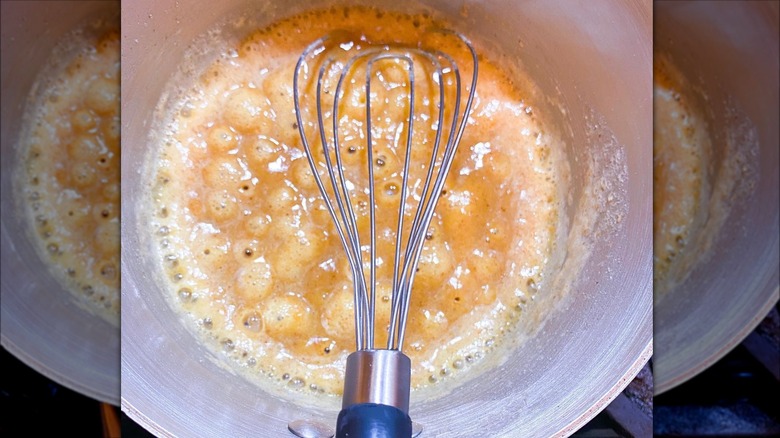
foodpastor/Instagram
While standard whisks are bulb-shaped, others are not. Many kitchenware manufacturers produce a flat whisk, also referred to as a roux whisk or pan whisk.
It looks almost as if a standard whisk was magically changed from three-dimensional to two-dimensional. It’s still made of loops of wire attached to a sturdy handle, but in this case, there are fewer wires, and they’re arranged in a flat pattern with the smallest loops in the center.
Flat whisks are specifically designed to whisk sauces and gravies in a shallow pan — hence “roux whisk” — where there’s not enough depth for conventional whisks to be effective. The flat whisk flexes so you can press down and bend the wires, immersing much of their length in the pan’s shallow liquid for effective mixing and stirring. This design also allows for easy cleaning. Once you’ve tried it, the flat whisk will be your new favorite kitchen tool.
5. Bar whisks
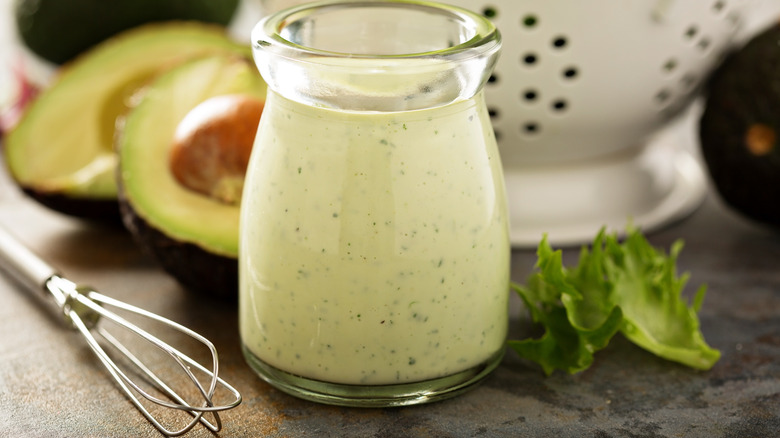
Elena Veselova/Shutterstock
You have probably seen mini whisks available online and in kitchenware stores. Those are called bar whisks because bartenders frequently use them. Many sophisticated cocktails call for frothing egg whites or other ingredients, and these tiny whisks — basically miniature balloon whisks — are ideal for the task without taking up valuable space at the bar.
While bartenders are their intended market, there are many other reasons to keep one or two in your kitchen. If you have kids interested in cooking or baking, for example, small-sized whisks and other kid-friendly cooking tools can help smooth the path for them.
Another obvious use is small-batch cooking. When you’re cooking for one or two people, a big whisk and a huge mixing bowl are often overkill. Even in ordinary family-sized cooking, small whisks are useful for tasks like making a cornstarch slurry or thickening a sauce. They won’t take up much space in your utensil drawer, so why not keep one around?
6. Conical whisks
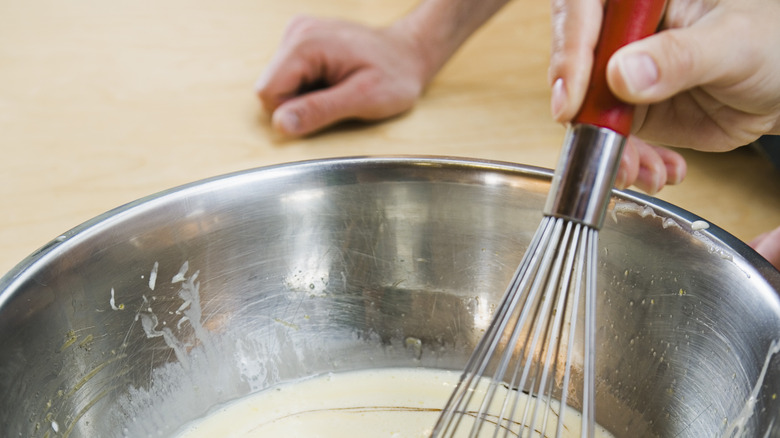
Jupiterimages/Getty Images
The rotund shape of a balloon whisk is efficient for mixing, but it does have some limitations. For example, it’s not great for getting into corners — a French whisk is better at that — and it’s also not good for scraping down the sides of a pot or bowl.
Enter the conical whisk. For about half of its length, from the handle down, it looks just like a balloon whisk. At about the midway point, though, instead of swelling out into a bulbous tip, the wires taper to a straight-sided cone, like a well-sharpened pencil. That unusual shape gives it a couple of culinary “superpowers.” Aside from whisking functionality, the straight-sided wires are ideal for scraping the sides of a pot, and the sharp point lets it get into corners. It’s almost like getting a whisk and a spatula in one.
Conical whisks are a professional cook’s tool, so your local kitchenware stores typically don’t sell them. If you’re interested in checking one out and maybe buying one, it’s best to visit restaurant supply outlets. It’s great to use when making a pot of thick soup or stew.
7. Spiral whisk
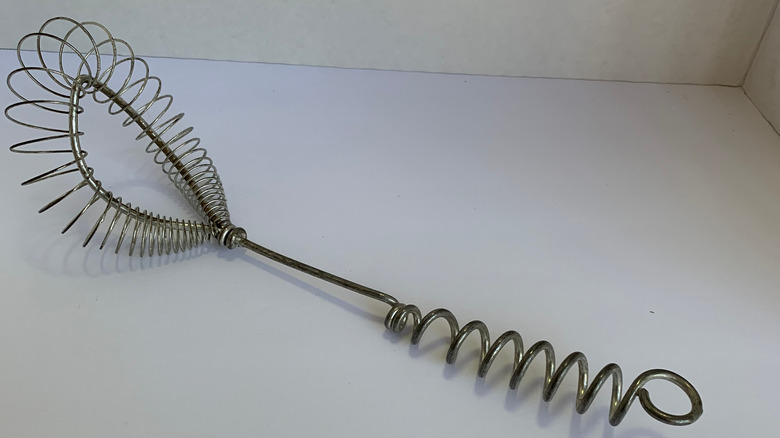
Peggy Hazelwood/Shutterstock
Spiral whisks are a sharp departure from the conventional styles of whisk used for most kitchen tasks. These are whisks with a ring of coiled wire positioned at an angle to the handle. With such a memorable design, you’ll most definitely be able to spot a spiral whisk when you see one.
Like roux whisks, spiral whisks are intended for tasks that involve mixing or beating relatively small quantities in shallow vessels, like a pan or the bottom of a small mixing bowl. Their angled head, like that of a dental tool, means you can keep the whisk’s coil flat on the surface of your pan and keep foods from sticking while still maintaining a comfortable wrist position.
A spiral whisk is good for making roux, gravy, and pan sauces, just like a flat whisk. It’s also useful for vinaigrettes on demand for your lunchtime salads when you don’t need to make a full-sized batch.
8. Danish dough whisk
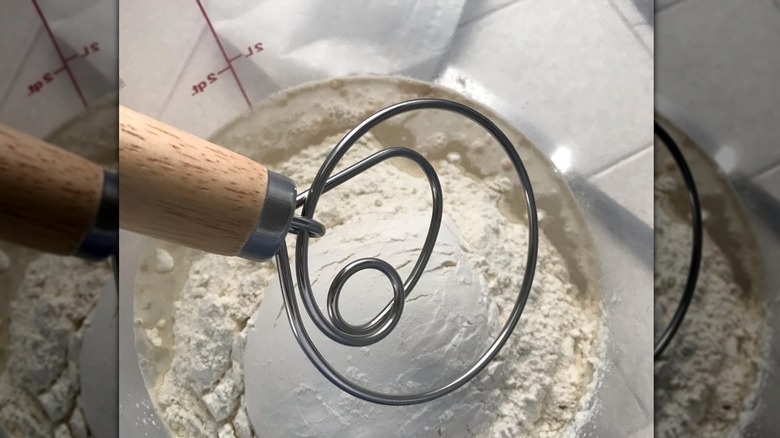
whimsicalwalney/Instagram
If you’ve only ever used your whisks for tasks like whipped cream and meringues, the notion of a whisk that’s specifically for doughs and the heaviest of batters might seem counterintuitive. Surely you’d want to use a stand mixer for that? Or a bread machine?
Well, it turns out there’s a type of whisk that’s made for exactly those uses. It’s usually described as a Danish – or sometimes Scandinavian – dough whisk, and it’s quite different from other whisks. Instead of long, thin wires, a dough whisk consists of a couple of relatively short, thick wire loops at the end of a sturdy wooden handle.
It may look odd, but it’s the manual equivalent of your stand mixer’s dough hook. Its unique shape scrapes your bowl, breaks up lumps, and efficiently folds wet and dry ingredients together, all with less time and effort than you’d believe possible. It’s the ultimate tool for creating evenly mixed baked goods by hand.
9. Ball whisk
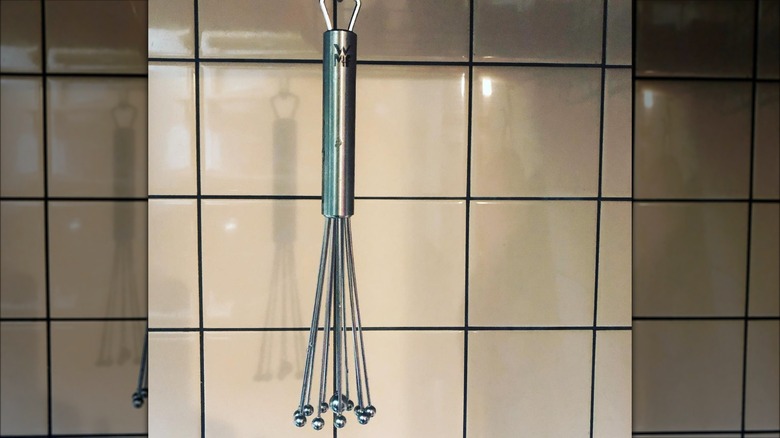
kayoxiang/Instagram
The ball whisk is a variation of the standard balloon whisk and a distinctive one. You could recognize it at a glance even if you’ve never seen one before because its name is self-explanatory.
It begins like a conventional balloon whisk, with wires set in a circular pattern around a sturdy handle. The wires are left open-ended, with a ball at the end of each wire, instead of curling around to make a loop. The weighted balls at the end are typically made of steel and are molded in place to each piece of wire, but you’ll also see some versions using ball tips made of silicone.
You’d use a ball whisk in the same way as a balloon whisk. Ball whisks are equally effective for the same tasks, like mixing light batters, and very easy to clean because there’s no basket-shaped tip that traps food and requires intense scrubbing.
10. Kettle whisk
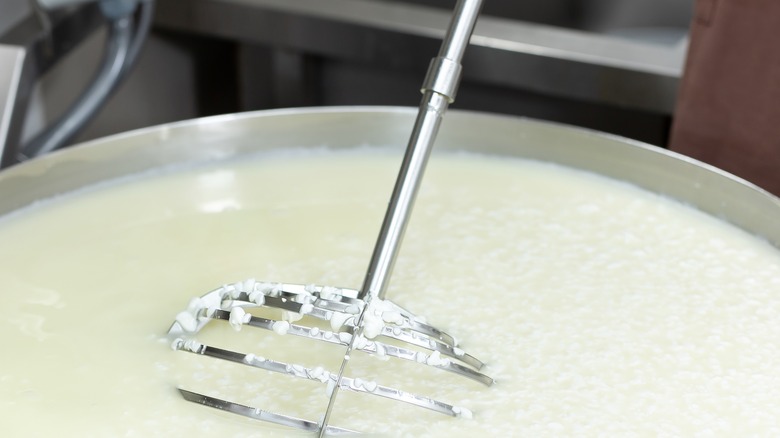
Studio Peace/Shutterstock
You won’t mistake a kettle whisk for any other kind because of its unusual structure. Instead of a bulb shape of relatively thin wires, it has a ball-shaped whisking head of thick wires set at the bottom of a very long handle.
This special-purpose whisk is used in large-scale commercial kitchens for stirring deep pots so the food can heat evenly. We must confess that we’ve never actually seen one used in the wild, though we’ve witnessed the usage of jumbo balloon and French whisks that are the size of your arm, as well as immersion mixers the size of a small outboard motor.
Kettle whisks are sometimes referred to as ball whisks because of their shape, but they shouldn’t be confused with home kitchen ball whisks, which have individual wires with a ball at the end. Kettle whisks — should you ever need one for your church kitchen or volunteer gig — are available from restaurant suppliers.
11. Coil whisk
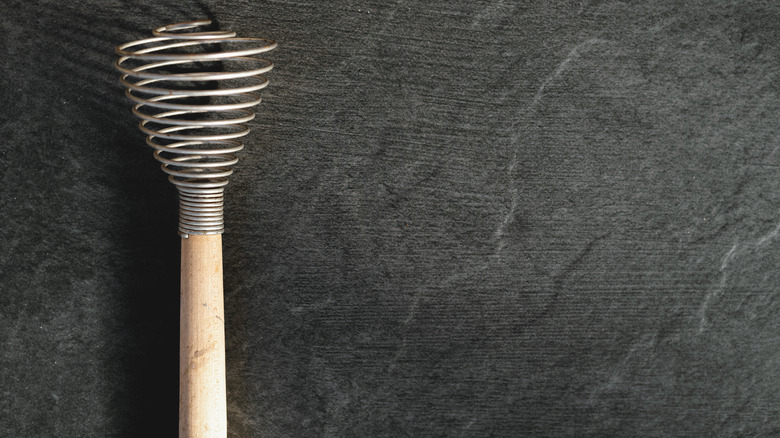
Happynati/Getty Images
Coil whisks, also known as spring whisks, are oddball gadgets consisting of a straight handle with a springy spiral coil at the end. In some cases, the coil makes a small spherical shape, and in others, it may flare out from top to bottom. You may often see one as the mystery item in a grab bag of otherwise recognizable kitchen gadgets at the thrift store.
It’s a fun and peculiar whisk, used very differently from most. You can still beat an egg or the like with a coil whisk in the usual circular or side-to-side whisking motion, but that’s not what it’s designed for. Instead, you use these by plunging them up and down so the ingredients you’re mixing are forced through the wires vertically.
This unconventional motion means it works best in settings where ordinary whisks won’t, like measuring cups and narrow bowls. You’ll use them primarily for beating eggs and whisking vinaigrettes, but their unique design also makes them useful for a lot of general-purpose small-batch mixing.
12. Bamboo whisk
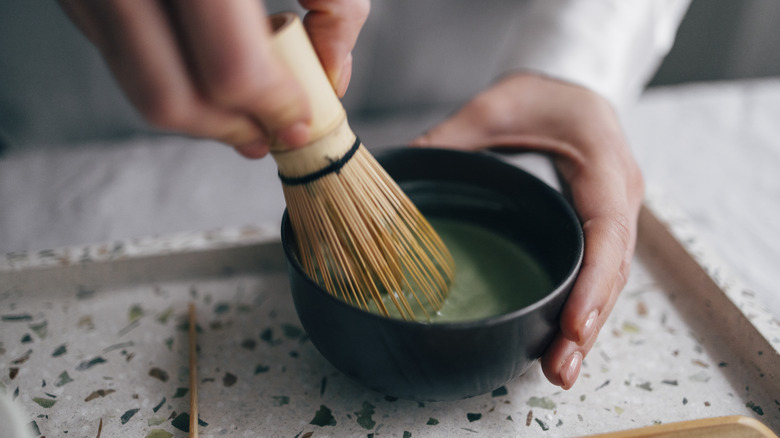
Freshsplash/Getty Images
It may sound bizarre to the modern ear, but bundles of twigs — yeah, from a tree — were the original tool used to make whipped cream, according to Food and Wine. It wasn’t until the Victorian era that the more hygienic, easier-to-use metal type was invented, the New York Times reported.
That doesn’t mean that twig-style whisks have entirely gone away. Whisks made from slivers of split bamboo are still widely used and sold from Asia as a wok cleaner or pot brush, perfect for cleaning the seasoned interior of a carbon-steel wok or modern nonstick pan without damaging the finish. Therefore, they are sometimes called cleaning whisks.
Another type of known bamboo whisk is specially used for frothing matcha, Japanese green tea. This matcha whisk, or chasen, rather resembles an old-school shaving brush and does a wonderful job of frothing your tea to the traditional light, foamy finish.
13. Frothers
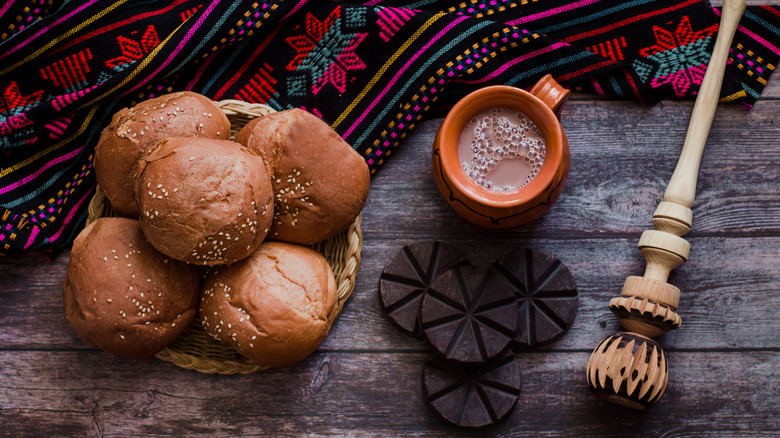
Marcos Elihu Castillo Ramirez/Getty Images
You may not think of them this way, but manual beverage frothers and some electric ones are also specialized whisks. Manual models are sometimes used with a wrist motion, like any other whisk. Others have a spring-loaded mechanism inside and spin at high speed as you pump them up and down.
Some frothers are deeply ingrained in regional culture and its folkways. A well-known example is the bamboo chasen used to froth matcha. Another interesting case in point comes from Latin America.
There, in the ancestral homelands of the cocoa bean, intricately carved wooden frothers have been used for centuries to raise a finely aerated foam by simply rolling it between two palms over and over. Called a molinillo, this is the kind of frother you’d use to really elevate Mexican hot chocolate or any other kind to its full potential. When you aren’t using it, a well-crafted molinillo is decorative in its own right and makes an attractive addition to your kitchen decor.
14. Whisk attachments
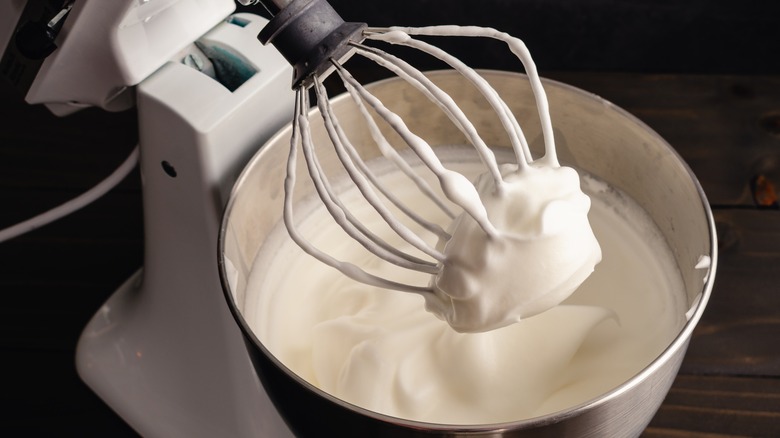
Candice Bell/Shutterstock
Even for those who are fans of hand tools, there will be times when whisking things manually just doesn’t work. It may be due to an inconveniently large batch size or because a transient injury or chronic illness made it difficult to use hand tools. This is when whisk attachments for kitchen appliances come into play.
The best immersion blenders often come with a whisk attachment. Bear in mind that even the blender’s regular blades do a surprisingly good job with small-batch whipped cream.
Hand mixers and stand mixers typically come with whisk attachments as an alternative to their respective regular beaters or flat paddles. Though the beaters of a hand mixer whip eggs and cream acceptably, the whisk is better, and stand mixers’ paddles just aren’t up to the task. Use your whisk attachment for eggs, cream, or light batters, and switch back to the beaters or paddle for doughs or heavy batters that might stress or break the whisk’s wires.



